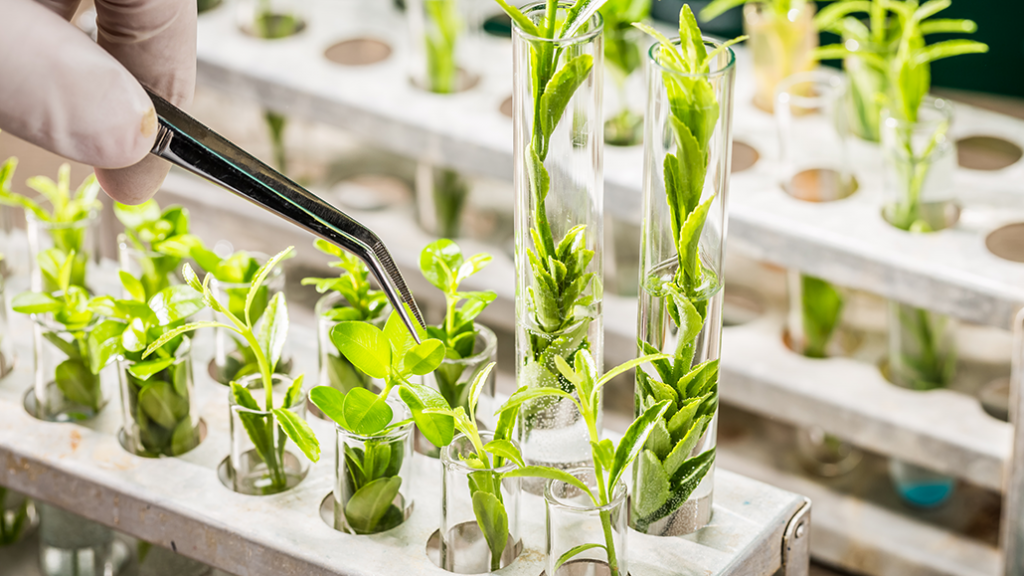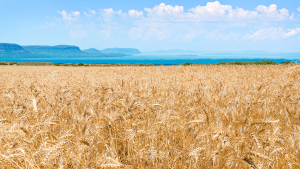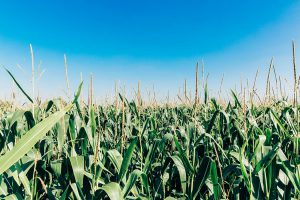Updating the rules
HELPING GRAIN FARMERS COMPETE GLOBALLY

IF CANADA AND Ontario are to maintain their reputation for high-quality grain and stay competitive in global markets, getting three current federal regulatory reviews right is a must, according to four industry representatives.
As part of a regulatory reform agenda that came out of the 2018 budget, Ottawa is currently looking to modernize the Canada Grain Act, the Seeds Act, and novel food regulations focused on plant breeding. In some cases, it has been decades since the rules have been overhauled.
“The way government interacts with industry has changed dramatically – where in the past, there were very prescriptive rules about how things ought to be or are done, now regulators tend to focus on results and outcomes,” says Tyler Bjornson, executive vice president of the Canada Grains Council.
CANADA GRAIN ACT
Agriculture and Agri-food Canada is currently reviewing the Canada Grain Act, which has not been substantially changed in 50 years. This legislation underpins the country’s grain quality assurance system, provides protections for grain farmers, and governs the Canadian Grain Commission (CGC). Extensive consultations were held from January to April this year.
“Now that the consultation period is over, the industry would like to know what the plan is to get the changes across the finish line,” says Erin Gowriluk, executive director of the Grain Growers of Canada (GGC). There have been numerous attempts over the years to update the legislation, and each time Parliament was dissolved or prorogued before work could be completed.
Gowriluk points out that one of the major changes that needs to be made is dealing with a $148 million surplus from grain inspection and weighing fees paid indirectly by farmers. The surplus has been mounting and accumulating interest since 2017. The industry consensus is to distribute the surplus back to farmers in the form of reduced fees.
“There’s also a strong desire to see inspection and weighing services move to third parties under the accreditation of the Canadian Grain Commission,” she says, noting that, even with a reduction in fees in the spring of 2021, private, third party services are still less expensive than what the CGC charges.
Grain Farmers of Ontario is among the supporters of this move, and it provided input into the GGC submission to the government. While the influence of the Act is not as pronounced in eastern Canada as in the west, there are a few areas that the organization weighed in on.
“It’s important that Ontario’s and eastern Canada’s voice is heard and that there is a recognition of the differences – including variety registration – that we have from the west,” says Rob Gamble, Grain Farmers of Ontario’s chief economist.
Gamble says another notable difference is the Ontario Grain Financial Protection Program, a check-off program which protects grain farmers in cases where licenced grain dealers or elevators can’t meet their payment or storage obligations. He says that any alterations coming out of this review should not adversely affect the program, which operates well and is appreciated by farmers.
Both Gamble and Gowriluk mention governance, and the fact that, whatever model results from the review, the Commission should reflect regional differences in the country.
Gowriluk says that, given the way the industry is evolving, there is a need to build a regular review – say every five or seven years – right into the Canada Grain Act. She also mentions the need for greater market transparency.
“We had a number of resolutions that pointed to the need for Canada to provide weekly export sales numbers by commodity and volume, like they have in the U.S.”, she says. “It would give farmers a better line of sight for planning.”
SEEDS ACT
The Seeds Act is another important piece of legislation that has not been reviewed in decades.
According to the Canadian Food Inspection Agency (CFIA), which is conducting the current review, the main purpose of the Act and its regulations is to “protect producers and consumers from misrepresentation, prevent the use of low-quality seed, and to create a level playing field for companies and individuals involved in seed production.”
“A lot has changed in the last few years in terms of how seed is developed and how farming is undertaken,” says Dr. Paul Hoekstra, Grain Farmers of Ontario’s vice president of Strategic Development. He wants positive changes made to the legislation to reflect the tools and processes that are and will be used in the industry in the coming years.
He cites everything from changes in how new varieties would be assessed and ultimately registered for sale and looking at new frameworks.
The CFIA did a needs assessment that was sent out to farmers and others and concluded in March 2021.
The government’s Seed Regulation Modernization Working Group has created a number of sub-groups to look at various topics. The teams are made up of representatives of the entire supply chain, including farmers, developers, breeders, seed companies, and academics. Hoekstra is the co-chair of the variety registration task team, and Dr. Josh Cowan, manager of Research and Innovation at Grain Farmers of Ontario, is on the seed certification task team.
“We have a farmer representative and a staff alternate on all of the teams,” says Gowriluk, adding that the alternates are available because of the time commitment and the fact that the task teams’ work is going on during planting and harvest. She adds that farmers are dedicated to participating because they care deeply about maintaining Canada’s high standards and getting what they pay for.
The teams are meeting regularly to consider various priorities and options.
Hoekstra says his team is looking at everything from the role of government to the need for variety registration to different delivery options and more.
“The goal is to provide the CFIA with options, including the pros and cons, on how they can improve,” says Hoekstra. Once the work is done by the task teams, the next steps are for the CFIA to consolidate the options and go back out for consultations.
“At the end of the day, farmers want seed technology to get to market as fast as possible but without compromising safety or the integrity of Canada’s world-class regulatory system,” he says. “It’s incredibly important that our voices are heard in this process to ensure the needs of our members are being met.”
PLANT BREEDING INNOVATION
“The advent of gene editing has caused the industry to look at regulating seed technology through a different lens,” says Bjornson. He says gene editing can produce plants that are indistinguishable from those derived from traditional breeding.
Bjornson also says that scientists around the world agree that gene editing is safe and that it is critical for Canada to have a responsive regulatory system for this technology.
Health Canada is developing two new pieces of guidance regarding the Novel Food Regulations focused on plant breeding. The objective is to provide greater clarity and consistency around regulations that govern novel foods derived from plants, including gene editing. They are also aimed at clearing a path for the efficient commercialization of these foods.
“We’re hopeful that Canada’s approach to gene edited products will align us with our global trading partners,” he says, noting that it is critical to ensure that any decisions are science-based and risk-based.
One drawback is that it has taken three years to make the changes, and the process still was not completed in early June. Bjornson points out that Canada is playing catch-up in terms of other countries such as the U.S., Australia, and several Latin American countries.
The United States Department of Agriculture (USDA), for example, signaled early on that gene edited products would be treated either like conventionally bred plants if no foreign DNA is used or like those derived from biotechnology if there is foreign DNA.
“It’s critical for our plant breeders to know how they’ll be treated in Canada’s regulatory system,” he says. , adding that the Health Canada consultations closed on May 24, 2021 and the Canadian Food Inspection Agency (CFIA) began consultations on the environmental side of the regulations. The CFIA also has to publish proposals for the livestock feed industry.
“We’re hoping for everything to be wrapped up and implemented by November or December this year,” Bjornson says, with Health Canada leading the way on the human food side in June or July.
“Farmers should be paying attention to this discussion because there’s so much that can be accomplished with this new innovation,” he says, adding it will really shorten the timeline for breeders to bring new varieties to commercialization, and possibly reduce costs.
“We want to ensure that Canadian farmers have access to the same technology as those in other countries,” says Gowriluk. “This technology is what is going to drive innovation and make them competitive and profitable.” She adds that it will help farmers meet their climate change objectives, make their farms more sustainable, and satisfy consumer demands for, for example, better nutrition.
Bjornson says it will also allow more public and private small and medium-sized enterprises to enter the field, with smaller acre and niche crops which in the past have not been as competitive in the R&D space.
“You have companies out there looking at herbicide tolerant flax or improved yields in some of the cereals that don’t have biotech traits,” he says. He thinks that the combination of gene editing and biotechnology will be a huge boon particularly for Ontario farmers who are already using the innovations.
“In the entire grain sector, we’re laser focused on two key things: efficient and effective regulations for innovations and global market access for those innovations in bulk grain trading,” Bjornson says. •




















